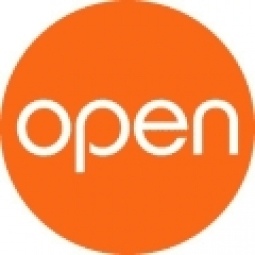Download PDF
Invia Robotics: Future-Proofing Security with Avigilon Alta

Technology Category
- Infrastructure as a Service (IaaS) - Cloud Databases
- Robots - Wheeled Robots
Applicable Industries
- Glass
- National Security & Defense
Use Cases
- Autonomous Robots
- Perimeter Security & Access Control
Services
- Cloud Planning, Design & Implementation Services
- System Integration
The Challenge
Invia Robotics, a rapidly growing tech-savvy company, was facing a significant challenge in managing the security of their premises. With employees working round the clock and new hires being added on a weekly basis, the task of managing and issuing physical keys was becoming increasingly complex and unmanageable. The company was in dire need of an efficient access control system. However, the traditional options available in the market were outdated and did not meet their requirements. The idea of replacing physical keys with badges was not appealing to them, as it would only shift the problem from managing keys to managing badges.
The Customer
Invia Robotics
About The Customer
Invia Robotics is a fast-growing, tech-savvy robotics company. They have employees working at all hours of the day and night, and are constantly adding new hires. The company is heavily reliant on cloud technology for most of its operations. Invia Robotics was in need of a modern, efficient, and scalable access control system that could keep up with their rapid growth and the complexity of managing access for a large and constantly changing workforce. The company values innovative and high-tech solutions that can simplify processes and improve efficiency.
The Solution
Invia Robotics found their solution in Avigilon Alta's cloud-based access control system. Being a tech-savvy company, Invia already had most of their technology running in the cloud, making Avigilon Alta's cloud-based solution a perfect fit. This solution eliminated the need for managing servers and local software, providing easy access to the control panel from anywhere. The system also automatically syncs with G Suite to manage users, eliminating the need for physical badges. Furthermore, Avigilon Alta's solution offered a mobile-first experience, allowing employees to use their phones to access the doors at the office. This not only simplified the access control process but also gave the office a sleek, high-tech look.
Operational Impact
Quantitative Benefit
Related Case Studies.

Case Study
Data Capture for Afghanistan Forces
Electronic equipments on the field of Afghanistan provided information on the status of the vehicle and to identify potential threats surrounding it to the British Force. The monitoring and interpretation of this data requires robust and sophisticated digitization for data capture and communication.
.png)
Case Study
Discrete Manufacturing Industries (Fiberglass Pipe)
The implementation of ERP software in a Discrete Manufacturing organization needs to be strategic, irrespective of its size and capacity. The client had already implemented an ERP system which fulfilled their requirements but was not efficient enough. Efficiency here meant Synchronized Planning, Updating and Multisite Planning. Planning at client’s place was done outside the ERP system. Lack of proper synchronization to the ERP system paved way to huge delays in the changes getting updated in the system. These delays caused disruption in achieving delivery schedules. Multisite Planning is a solution to an organization which has multiple production units (may or may not be geographically separated) and thus needs planning across these units to synchronize production activities within them. The client also has multiple factories and hence Production Planning control is very essential in their case. Since Multisite planning was not possible with Baan ERP system, this was another bottleneck for the client.

Case Study
Major Aerospace Company Automates Asset Management
The O&M division of an aerospace and global security company was using spreadsheets to manually track more than 3,000 assets assigned to students and staff. Maintaining audit trails for this high volume of equipment became increasingly time-consuming and challenging. The chore involved knowing precisely what equipment was on hand, what had been issued, its location and the name of the custodial owner of each item. Every aspect of this task was carried owner of each item. Every aspect of this task was carried out by individuals with spreadsheets. Manually documenting the full lifecycle of each asset added to the burden. This included tracking maintenance requirements and records, incidents and damages, repairs, calibrations, depreciation, and end-of-life data.

Case Study
Securing a Large Data Center in the EMEA Region: An IoT Case Study
A leading data-center operator in the EMEA region, with multiple facilities spanning over 25,000 square meters, faced significant security challenges. The operator experienced interruptions in their internal IT network due to unsupervised work of third-party technicians. Despite having a high-end building control system that provided 24x7 monitoring and control to all the building’s infrastructure, the data center was vulnerable from a cyber perspective as it was connected to the IT network infrastructure. The operator launched an urgent OT cyber security project that included both IT-OT network segmentation and OT network asset mapping and anomaly detection. The main objectives were to harden the security of the server systems, secure the facility’s power supply and server cooling system, strengthen the segmentation between building and operational systems, create a visual OT network map, and set up a system for presenting supply-chain attacks that may threaten the data center through equipment vendors’ maintenance activities.

Case Study
Enhancing Security Precision with IoT: A Case Study of Guardsman Group
Guardsman Group, a leading security company in the Caribbean, faced a significant challenge in maintaining the security of its digital infrastructure. The company provides security equipment, personnel, and systems for various businesses across the region. However, one of its offices experienced a security incident that affected all communications at that location. The existing security tools were not sufficient to provide the necessary protection, and it took hours to identify the source of the issue. This incident highlighted the need for a dynamic solution that could proactively identify threats. The company's primary concern was any disruption to its business, as it manages a significant portion of Jamaica's money and cannot afford for its operations to go down.

Case Study
Asia Airfreight Terminal Enhances Operational Efficiency with CommScope's RUCKUS Solutions
Asia Airfreight Terminal (AAT), a leading cargo handling company based out of Hong Kong International Airport, was facing challenges with its Wi-Fi network, which was critical for the functioning of its automated Material Handling System (MHS) within the warehouse. Any interference or lost signals could directly impact their operational efficiency. AAT also had separate networks for their office and CCTV cameras, which made the job of their data center challenging. The company was in search of a Wi-Fi network configuration that could streamline their networks and reduce its network management workload. AAT was already running on equipment from a competing vendor, and the new solution needed to prove its worth in scalability and reliability.





